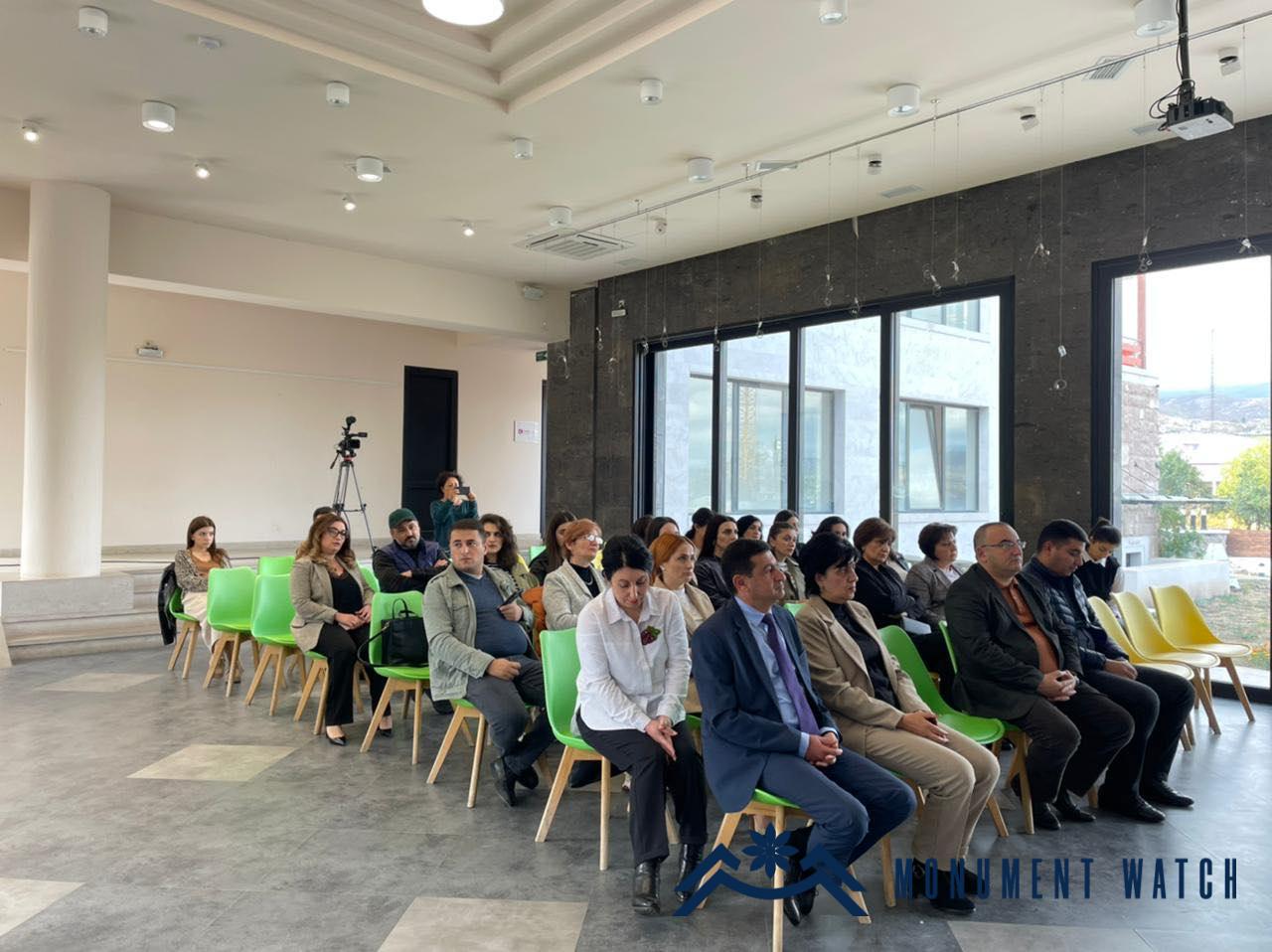
Presentation of the lost collections of works of art of Shushi held in Stepanakert
The State Council for the Protection of Cultural Heritage in the Occupied Territories has so far documented and identified 1,026 works of fine art from the museum and private collections left in Shushi. This was announced on October 19 by the coordinator of the work of the State Council for the Protection of Cultural Heritage in the Occupied Territories, Sergey Shahverdyan during the presentation of the lost art collections of Shushi in the Stepanakert Center of Francophonie Paul Eluard’s House.
“One of our priority tasks is to identify all the collections left in the occupied territories. Besides the state museums, many private collections remained in the occupied territories as well. To date, we have managed to find out that 13 museum collections and collections of works of art remain in Shushi (in particular), including: 658 exhibits at the State Museum of Fine Arts, 51 in the Shushi International Sculpture Park, 66 in the exhibition hall of the Art Center, 36 from the collection of the Narekatsi Art Union, 168 exhibits at Samvel Tavadyan’s, 20 – at Artak Poghosyan’s, 37 exhibits at David Avagimyan’s workshops and exhibition halls” - Shahverdyan stated, adding that the collections of the State Museum of the History of the Fortified City, the Geological Museum, partly the Museum of the Artsakh Carpet, the Museum of Numismatics, the Art Gallery, as well as the house-museum of Vardan Dushman also remained in Shushi.
“We cannot be sure that this list is final. Because it is quite possible that people may appear whose private collections were also among them. This list will probably be supplemented with time,” the speaker noted. According to the coordinator of the work of the State Council on the Protection of Cultural Heritage in the Occupied Territories, the most difficult process is to identify the cultural property contained in these collections. Not only museum pieces and collections of fine arts, but also their lists remained in Shushi”.
“All the documents that were supposed to be kept in the museum remained in Shushi. So we had to compile these lists again. They also have an evidence base, as these contain photographs or videos", - Shahverdyan emphasized, adding that a significant part of the exhibits from the lost collections of art works of some museums of Shushi was provided by private individuals for temporary display.